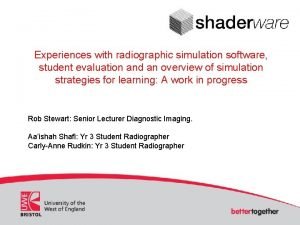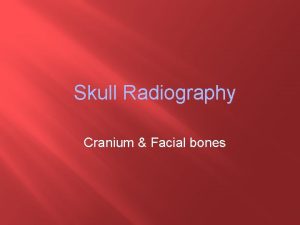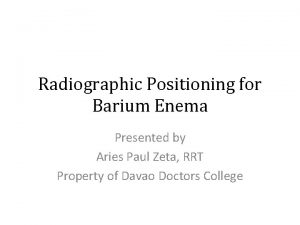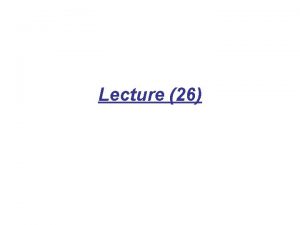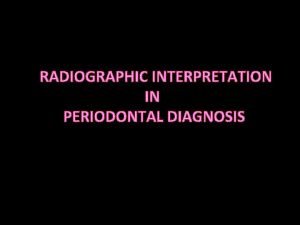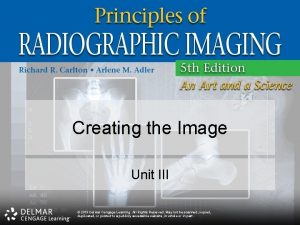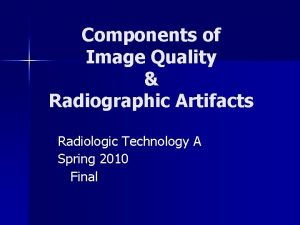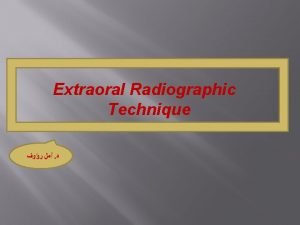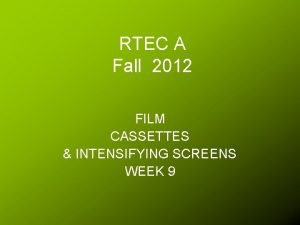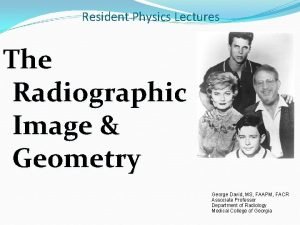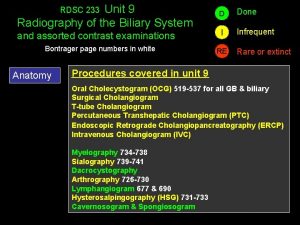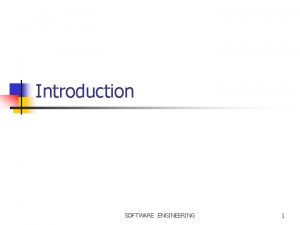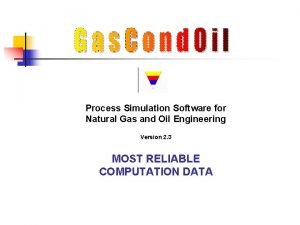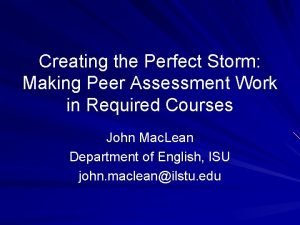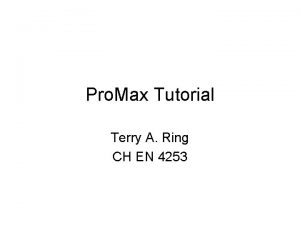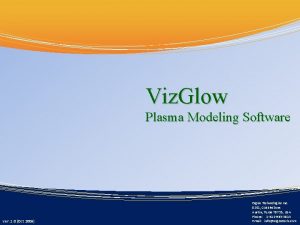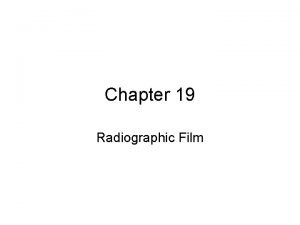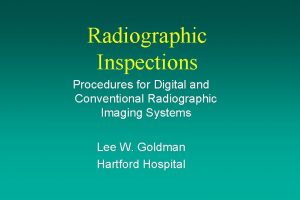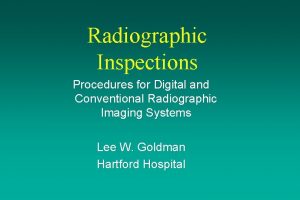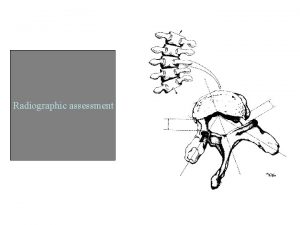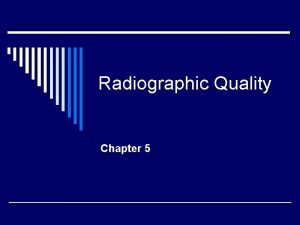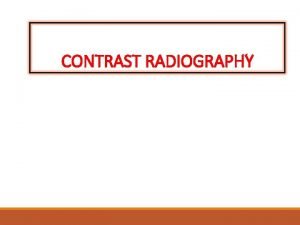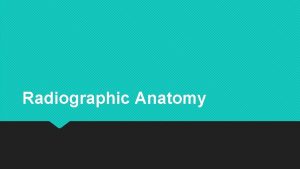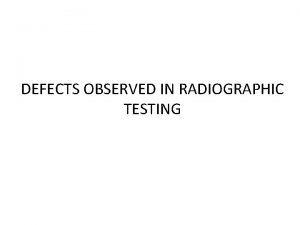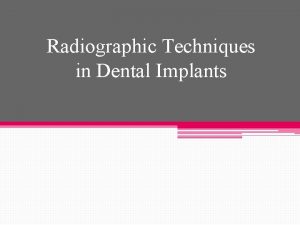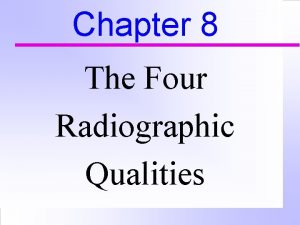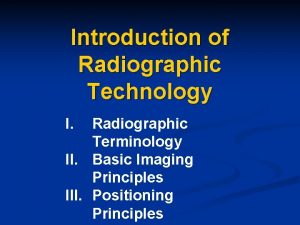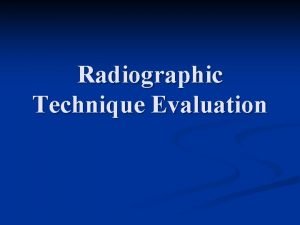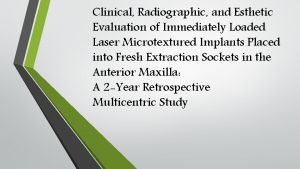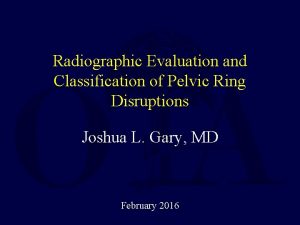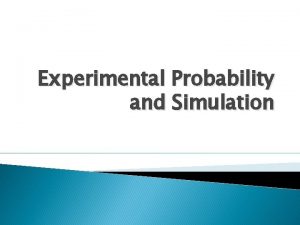Experiences with radiographic simulation software student evaluation and






















- Slides: 22

Experiences with radiographic simulation software, student evaluation and an overview of simulation strategies for learning: A work in progress Rob Stewart: Senior Lecturer Diagnostic Imaging. Aa’ishah Shafi: Yr 3 Student Radiographer Carly-Anne Rudkin: Yr 3 Student Radiographer

Background • With only 1 x-ray suite at UWE, the time available per student to get “hands on” is limited. • Feedback from students is; “more practical opportunities would benefit”

The Proposal • That a second x-ray suite would be the ideal option. • Budget considerations and room shortages prevent this from being practicable. • Simulation of practical aspects of Radiography is a viable alternative, such as VERT.

The evidence "… healthcare professionals… should learn skills in a simulation environment and using other technologies before undertaking them in supervised clinical practice. " Great Britain: Department of Health, 2011

The Project • After a moderate literature review and discussion with other UK users of simulation software a business case was produced. • Other simulators were considered. • Shaderware was chosen for radiograph quality and physics modelling.

The Project • Installation on UWE pc’s • 12 concurrent users • User guides and workbooks on Blackboard modules • Review of performance and uptake

The Product

Virtual x-ray room

Virtual Chest x-ray Virtual Positioning Virtual Control Console with Image preview Monitor area.

Realistic radiograph Realistic exposure data

Student Voice • • Feedback from comments on workbooks Survey underway during placement Focus group July 2015 from volunteers Evidence from Year 3 Dissertation Projects

Student Feedback: Student ‘B’ Year 1 • The programme is relatively easy to navigate. It has very lifelike images and movements of the patients to show what a real practical experience is going to be like. • There are lots of different positions you can put the patient in, as well as setting various exposure factors. This is useful because you can see what adjusting KVP/MAS will do to the image quality. And when focusing on the ALARP principal, having the lowest exposure (with a still diagnostic image) is critical. • It allows you to make mistakes without actually doing harm to people or yourself.

Survey Feedback • Was it easy to use? • Did the simulator aid your learning of techniques?

Survey feedback Tell me about your personal experience of this program was it? Answer % A very positive experieince 8. 33% Reasonably positive experience 16. 67% Neutral experience 33. 33% Mildly negative experience 16. 67% Very negative experience 8. 33% Qualitative comments: 1. I would have preferred it to be used for helping us understand exposure factors 2. Potentially have more scheduled session per week rather than just 1?

Student Research: 1. Dose Manipulation • Used real x-ray experiment for baseline • Continued the experiments virtually • Images assessed visually by reporting group. Investigation into the effect of distance, high, low k. Vp and air gap technique on image quality and dose of chest radiography using Shaderware virtual technology. Aa’ishah Shafi 2015 Figure 1. Projection. VRTM room showing setup at 180 cm SID with 10 cm air gap (Shaderware, 2014).

Student Research A Graph to show the Difference in DAP Values of the Four images taken with the x-ray room compared to Projection. VRTM 35 30 31. 12 29. 7 DAP 25 20 15 7. 71 10 7 5 7. 2 7 0 1 2 x-rays Image Number 3 4 projection VR Graph 1. A Graph to show the Difference in DAP Values of the four images taken with the x -ray room compared to Projection. VRTM. This investigation has demonstrated the uses and benefits to undergraduate learning that can be achieved through the use of Shaderware Projection Virtual Radiography. TM. Projection. VRTM allowed for the complete control of many variables and was less time consuming whilst simultaneously providing more information than an actual experiment would have.

Student Research: 2. Comparison • Used anthropomorphic phantom and virtual simulation Does Simulation Software Replicate the Results Achieved in a Standard X-ray Room in an Educational Setting? Carly-Anne Rudkin 2015

Student Research X-ray room Simulation Software 350 R 2 = 0. 9993 300 DAP (c. Gycm 2) 250 R 2 = 0. 9996 200 150 100 50 0 65 70 75 80 85 90 k. Vp at 100 cm FFD/16 m. As 95 100 Figure 7 illustrates a similar linear relationship between the DAP and k. Vp as to the ESD and k. Vp (figure 6) for both training methods. The DAP is a measurement of the radiation dose to air multiplied by the area of x-ray field (collimation). As collimation can effect dose, the DAP was used as a tool for validating collimation consistency in both experiments (Papp, 2014). The results of this study have shown that simulation software replicates the same scientific principles as a standard university x-ray training room when experimenting with exposure factors. The k. Vp, ESD and m. As, ESD demonstrated an expected linear relationship. There was an increase in ESD when only increasing either the k. Vp or m. As when using both training methods. These findings support Cosson and Willis 2 (2012) proposal that Simulation Software offers a safe and effective method for teaching radiography students the effects of manipulating exposure factors on patient dose. Student radiographer perspectives on using a screen based computer simulator in diagnostic radiography Cosson, P. , and Willis, R. N. Published November 2012 © Shaderware Limited

Student Survey Feedback 5. Use of exposure control settings 1 2 3 4 5 Answer Very Useful Neutral Useless Very Useless % 43% 0% 14% • A split range supporting the idea that much more can be accomplished in this area.

So what has been achieved? • Increased learning potential for students • Integrated simulation into the current program • Freedom to fail; integrated into learning • Learn at the students convenience added • Multiple feedback and discussion opportunities • New insight gained for tutors on delivery

Future Research? • • Ideal for cohort studies Alternate projection development Radiation experiments ? ? ?

Questions
 Student evaluation software
Student evaluation software Mandible x ray positioning towne's
Mandible x ray positioning towne's Enema positioning
Enema positioning Grid conversion factor radiology
Grid conversion factor radiology Single door system in darkroom
Single door system in darkroom Dental radiographic interpretation ppt
Dental radiographic interpretation ppt Imagen de box bony
Imagen de box bony Sid vs oid
Sid vs oid Lamina dura of teeth
Lamina dura of teeth Radiographic film
Radiographic film Radiographic artifacts definition
Radiographic artifacts definition Reverse towne projection uses
Reverse towne projection uses Radiographic films
Radiographic films Subject contrast
Subject contrast Transhepatic cholangiography
Transhepatic cholangiography Difference between student software and industrial software
Difference between student software and industrial software Process simulation software in oil gas market
Process simulation software in oil gas market Student peer evaluation examples
Student peer evaluation examples Microwave circuit simulation software
Microwave circuit simulation software Promax process simulation software
Promax process simulation software Emc simulation software
Emc simulation software Plasma modeling software
Plasma modeling software Multisim simulation software
Multisim simulation software
